


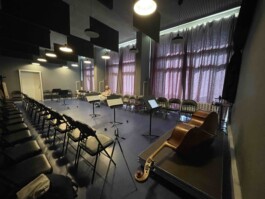
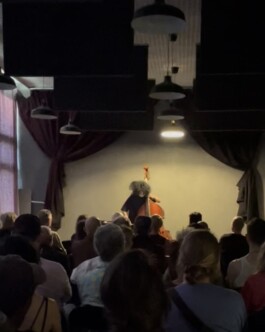
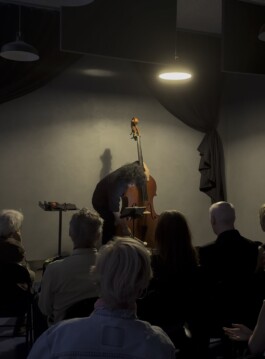
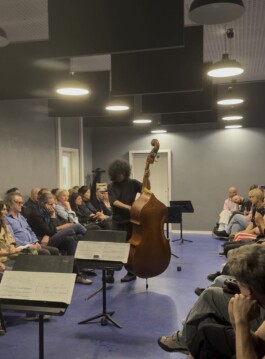
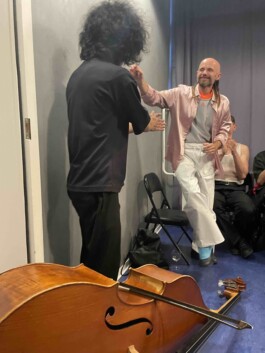
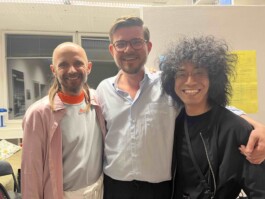

Lost in_____VI (2022)
"Ryutan-tan" is a novel written by Kyoka Izumi, an author active from the late Meiji to early Showa periods. The main character is a boy who was bitten on the face by an insect called 'Hanmyou' (also known as 'Michioshie') on an azalea hill, which leads him to wander into a fantasy world. The playwright and director Hirotaka Naito referred to this novel in his contribution on how to deal with culture in the COVID Disaster (23 April 2020, Mainichi Shimbun, Kansai Edition, evening edition), saying: 'We have already entered the entrance. It is not clear when we entered. ~I didn't think we were this far in. Now we are in the middle of the story." This was the inspiration for this piece. I titled it 'Lost in _______' (Lost in _______) because I believe that with the current global COVID outbreak, many people have lost something and feel lost in another world. We have been forced to wander into a 'new world' full of anxiety and wonder. We want the blank space in the title section "__________" to be filled with words that apply to the listeners themselves. I also hope that this song will be widely performed in various places in the future, and that by that time we will have found our 'way out' of the 'middle of the story'.
Hinako Takagi
She has published numerous compositions on the theme of 'music you can feel breathing', and her works have been performed by groups such as the Orchestre de la Suisse Romande, Lemanic modern ensemble, Musique des lumières, Osaka College of Music Orchestra (conducted by Michiyoshi Inoue) and other well-known musicians. She holds a degree in composition from the Osaka College of Music and a postgraduate degree in composition from the same college; in 2017, she received third prize in the composition category (chamber music) at the Japan Music Competition; in 2019, she received first prize in the composition category at the Geneva International Music Competition.
Valentine (1969)
This contemporary work for solo double bass has probably been performed the most frequently since it was first performed in 1969. Not only did it break the previous 'rules' and 'traditions' and add a theatrical element to the piece, but it also 'reinvented' the score. Two further lines are marked below the stave, with an additional vocal stave above. The noteheads are white, black, circular, triangular, rectangular, or marked with an X; Respectively, all signifying different playing techniques. Instead of a set beat or tempo, the approximate elapsed time is shown in five-second intervals. Performers are required to read and express this overwhelming information on the score.
Jacob Druckman
Born in 1928 in New Haven, Connecticut, about 120 km (change to miles) east of New York, he began composing at the age of 15. He studied at the Juilliard School and the Ecole Normale de Musique in Paris before teaching at the Juilliard School. He composed many works for electronic music, orchestra, and small ensembles. This eventually led to him winning the Pulitzer Prize in 1972, and was composer-in-residence of the New York Philharmonic from 1982 to 1985.
Ombres portées(2017)
The larger the body, the more concrete and imposing, the more its shadows will be projected.
According to the angle with which the light will come to attack it, then will emerge from the illuminated
body an image more or less precise, more or less distant.
The shadow is always opaque, de-toned, approximate. It is only a trace of the initial model : a
resonance, in other words, a simplification.
Presented in concert without interruption, the five pieces constituting the cycle, emerge from the
instrument but at the same time illuminate it. Each piece highlights certain and specific resources to the
double bass, as are the natural harmonic sounds, the instrumental spectrum, the bowing techniques or
those of the left hand, the possibility of sliding every sound which is produced, the natural inertia and
speed of the instrument, its heaviness and its lightness, etc.
Ombres portées was first performed on February 29, 2017 in Paris as part of the Présences of the
french radio.
Daniel D’Adamo
Daniel D’Adamo
Born in Buenos Aires, he began his musical training there. In 1992 he moved to France, where he studied composition with Philippe Manoury at the Conservatoire National Supérieur de Musique de Lyon, and with Tristan Murail and Brian Ferneyhough at IRCAM. His works for large ensembles, monodramas and chamber operas have been performed in North and South America, Asia and Europe, and he has been commissioned by various music festivals in France.